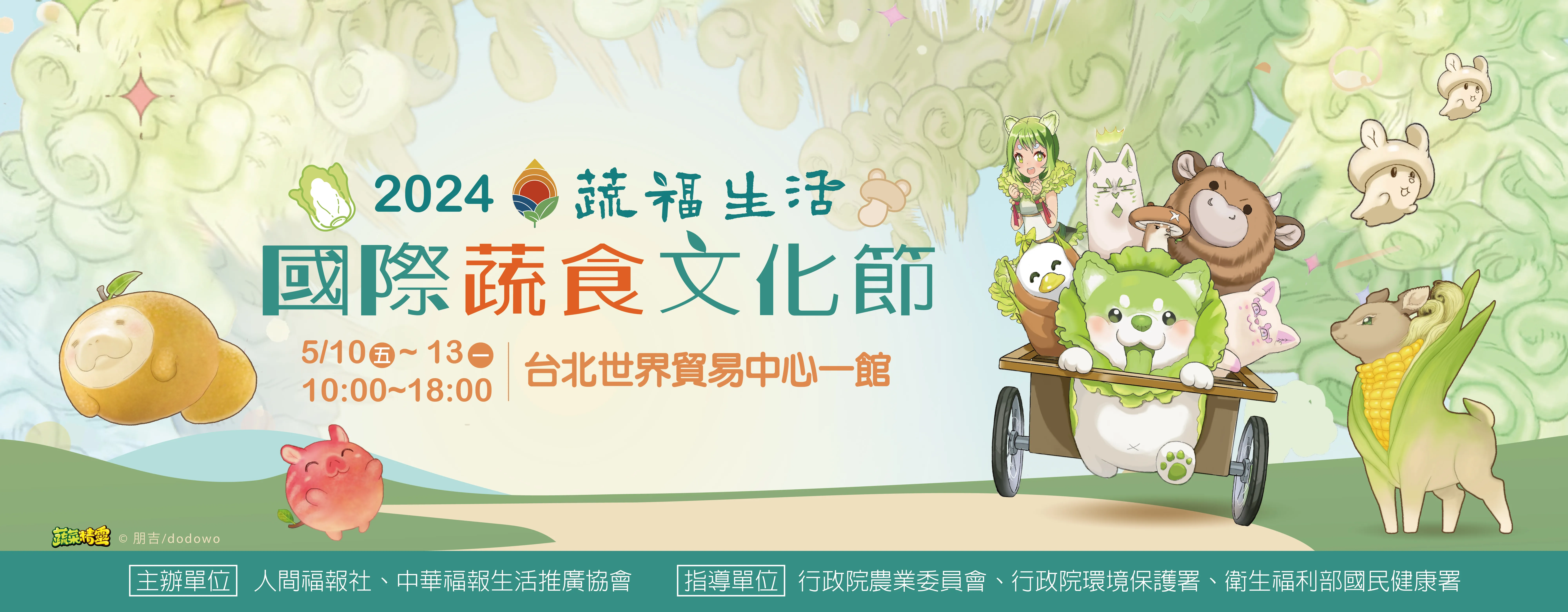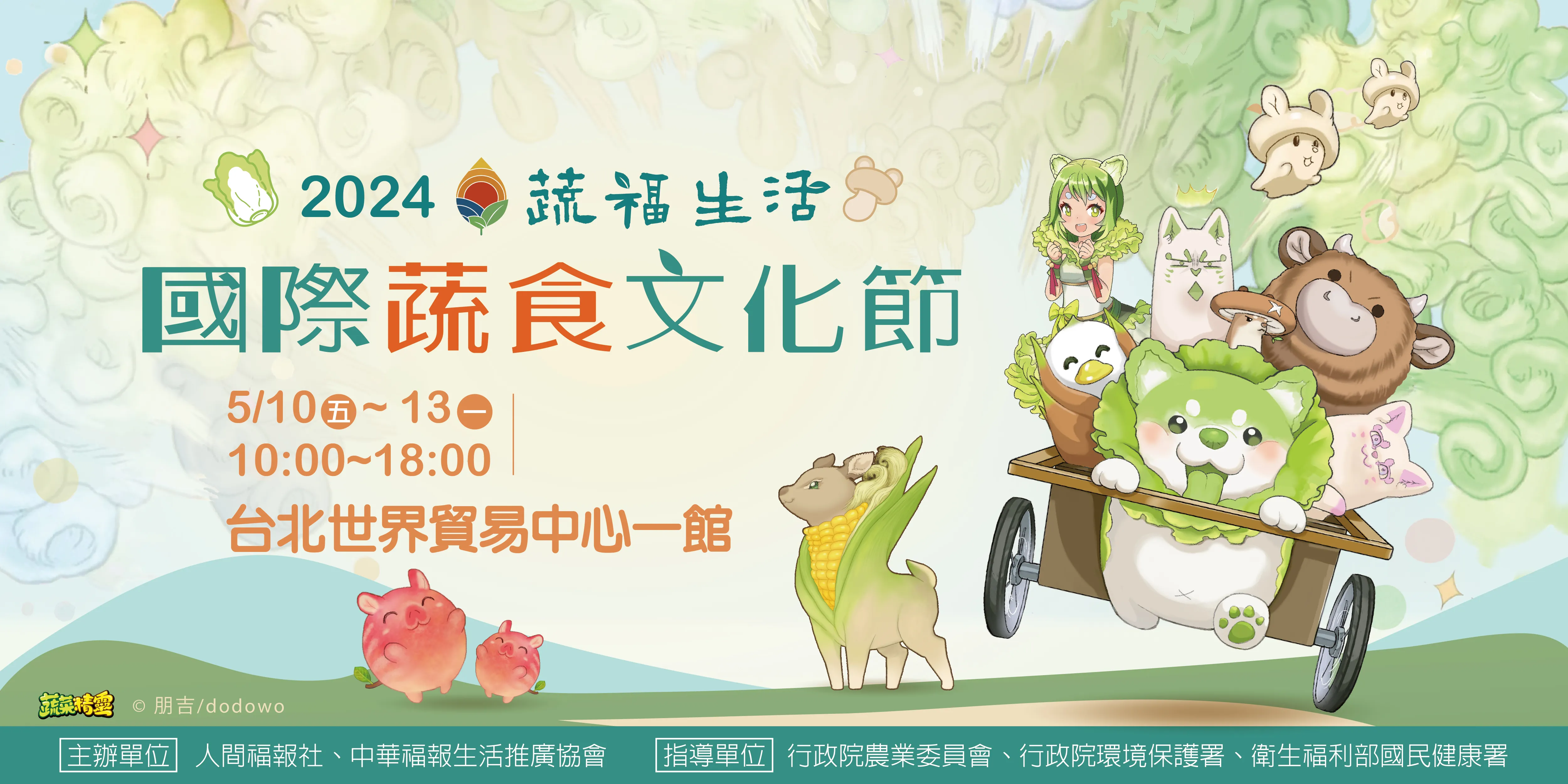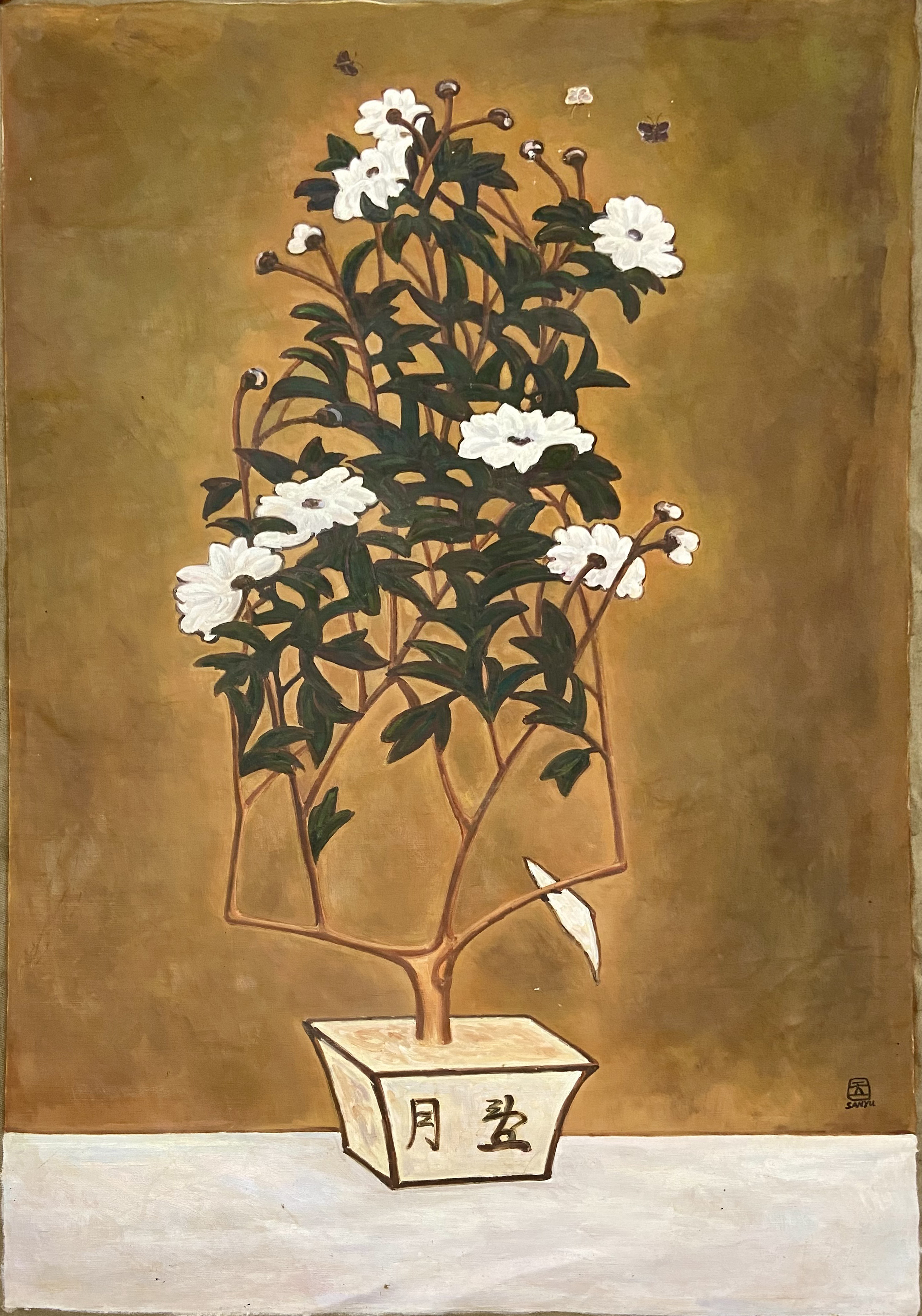


| 時代: | 西元1950年代 A.D. 1950s |
| 尺寸: | 長度:180 cm 寬度:123 cm (未含外框) Length:180 cm Width:123 cm |
| 質地: | 油畫布 Oil painting |
收藏人:亞洲藏家
此幅常玉的‟向陽白牡丹(120號)”為常玉的油畫靜物作品,此幅畫作花盆、枝幹部分、花和葉子局部,稍微以書法性淺咖啡色系線條或同色系線條打邊,立體、色澤深淺不一的線條瀟灑十足,並納入山水圖畫的留白概念,整幅畫構圖簡約。此幅畫作背景先以亮土黃色為底,再以淺墨綠色渲染,以中國畫的方式來表現油畫中的光影變化,在淺墨綠色背景中襯托出沐浴在溫暖陽光下的繁盛白牡丹,灰白色為桌面,隱約看得出背景下方應有畫過其他畫的痕跡,符合常玉在同一畫布上重複做畫的特性。白色的牡丹,搭配深淺不同的深綠色葉子、褐色莖脈和枝幹,種於深咖啡色打邊的白色花盆中,花盆上有「望月」兩字,花盆上方有深咖啡色、銀白色的蝴蝶,花盆右下側有一隻頭朝下的白鳥,藉由些微色系深淺、陰影,襯托出整體的層次感。此畫是常玉慣用、油畫作畫方式最高境界的平塗法創作,以中國水墨寫意流暢的書法線條,融合西方野獸派的簡潔強烈特色,獨創辨識度高的繪畫風格,此幅局部顏料中即有脫落的毛筆痕跡。常玉性格灑脫,線條力道十足、不重複,即便平塗上色後遮蓋住線條,也不會再重複描線,厚實的平塗色塊搭配中國式的渲染方式,呈現出菊花和葉子的立體感,是常玉畫作的重要特徵。此幅畫作所用之畫布含棉、麻,畫布微厚,為1950年代歐美常用之畫布,畫布後有年代久遠形成的黴斑,以及因年代久遠油畫顏料滲透的痕跡,且畫布已失去韌性、易脆,油畫顏料是常玉慣用以亞麻仁油調色、年代久會有黏性的顏料,而因早期保存環境不佳,讓此幅畫作有部分氧化現象。此幅與國立歷史博物館典藏之《望月》畫作構圖雷同,惟史博館典藏畫作的盆旁邊有一隻貓,是畫在纖維板上,此幅畫作沒有貓,是畫在畫布上,讓牡丹看起來更生機盎然。右下角有繪出的「玉」字圖章,以及羅馬拼音「SANYU」,為常玉油畫常用之落款,花盆上「望月」二字也符合常玉的筆跡,此幅為標準、正確之經典常玉畫作。
Sanyu's "White Peonies Facing the Sun (No. 120)" is an oil painting still life by the artist Sanyu. The painting depicts parts of a flowerpot, branches, flowers, and leaves, with borders drawn in calligraphic light brown lines or lines of the same color scheme, creating lively lines of varying depth and shade. The painting incorporates the concept of blank space from landscape painting, presenting a simple composition. The background is initially a bright ochre, then rendered in light ink green, using Chinese painting techniques to depict changes in light and shadow in oil painting. Amidst the light ink green background, the flourishing white peonies bathed in warm sunlight stand out. The tabletop is in gray-white, and traces of other paintings underneath are faintly visible, indicating Sanyu's tendency to paint over previous works on the same canvas. The white peonies are accompanied by leaves and stems in varying shades of deep green, brown veins, and branches, planted in a white flowerpot with deep brown borders. There are the characters "Gazing at the Moon" on the flowerpot, a deep brown and silver-white butterfly above, and a white bird facing downward on the lower right side of the flowerpot. Subtle variations in color and shading enhance the overall sense of depth. This painting demonstrates Sanyu's mastery of the flat painting technique, a fusion of flowing calligraphic lines from Chinese ink painting with the concise and strong characteristics of Western Fauvism, creating a unique and highly recognizable painting style. Some brush traces are visible within the pigment, showcasing Sanyu's spontaneous and assertive line work. Even after applying layers of paint to cover the lines, Sanyu did not redraw them, resulting in thick, solid color blocks that, combined with the Chinese-style rendering, create a sense of dimensionality for the peonies and leaves, a distinctive feature of Sanyu's work. The canvas used for this painting contains cotton and linen and is slightly thick, typical of the canvas commonly used in Europe and America during the 1950s. There are signs of aging on the canvas, such as mildew stains formed over time and traces of oil paint penetrating due to aging. The canvas has lost its elasticity and is brittle, and the oil paint, typically mixed with linseed oil by Sanyu, may become sticky over time. Due to poor early preservation conditions, the painting shows signs of oxidation. The composition of this painting is similar to that of the painting "Gazing at the Moon" in the collection of the National Museum of History, but the one in the museum has a cat next to the flowerpot and is painted on fiberboard, while this painting does not include a cat and is painted on canvas, giving the peonies a more vibrant appearance. In the lower right corner, there is a stamped "Sanyu" seal in Chinese characters and the Romanized "SANYU," a common signature used by Sanyu for his oil paintings. The characters "Gazing at the Moon" on the flowerpot also match Sanyu's handwriting. This piece is a standard and correct classic Sanyu artwork.
.png)
- 林風眠‟寶蓮燈”
- 常玉‟盆菊與蝶(120號)” San Yu "Chrysanthemums and Butterflies (No. 120)"
- 林風眠‟楊門女將穆桂英” Mr. Lin Fengmian " Mu Guiying, the Female General of the Yang Family "
- 林風眠油畫‟火燒赤壁” Mr. Lin Fengmian " Fire at Red Cliffs "
- 常玉‟紅底盆菊(120號)” San Yu " Red-Based Chrysanthemums in a Pot (No. 120)"
- 林風眠油畫‟白蛇傳” Mr. Lin Fengmian "Legend of the White Snake"
- 常玉‟盆中的果樹(120號)” San Yu "Fruit Trees in a Pot (No. 120)"
- 常玉‟花團錦簇(120號)” San Yu "Abundance of Flowers" (No. 120)
- 常玉‟牧童與水牛” San Yu "Cowherd and Water Buffalo"
- 常玉‟青花盆中的粉菊(120號)” San Yu "Pink Chrysanthemums in a Blue and White Pot" (No. 120)
- 林風眠‟寶蓮燈”
- 常玉‟盆菊與蝶(120號)” San Yu "Chrysanthemums and Butterflies (No. 120)"
- 林風眠‟楊門女將穆桂英” Mr. Lin Fengmian " Mu Guiying, the Female General of the Yang Family "
- 林風眠油畫‟火燒赤壁” Mr. Lin Fengmian " Fire at Red Cliffs "
- 常玉‟紅底盆菊(120號)” San Yu " Red-Based Chrysanthemums in a Pot (No. 120)"
- 林風眠油畫‟白蛇傳” Mr. Lin Fengmian "Legend of the White Snake"
- 常玉‟盆中的果樹(120號)” San Yu "Fruit Trees in a Pot (No. 120)"
- 常玉‟花團錦簇(120號)” San Yu "Abundance of Flowers" (No. 120)
- 常玉‟牧童與水牛” San Yu "Cowherd and Water Buffalo"
- 常玉‟青花盆中的粉菊(120號)” San Yu "Pink Chrysanthemums in a Blue and White Pot" (No. 120)
